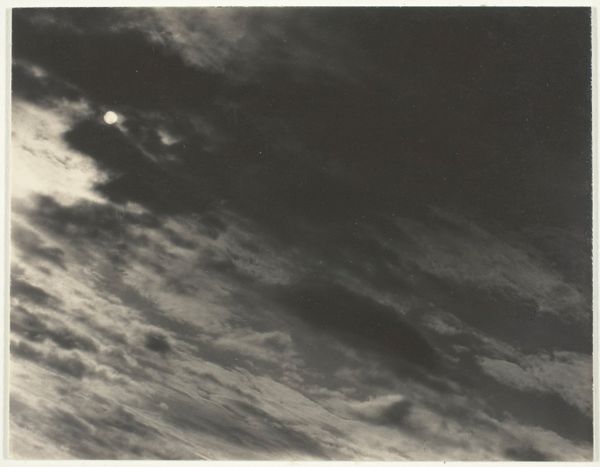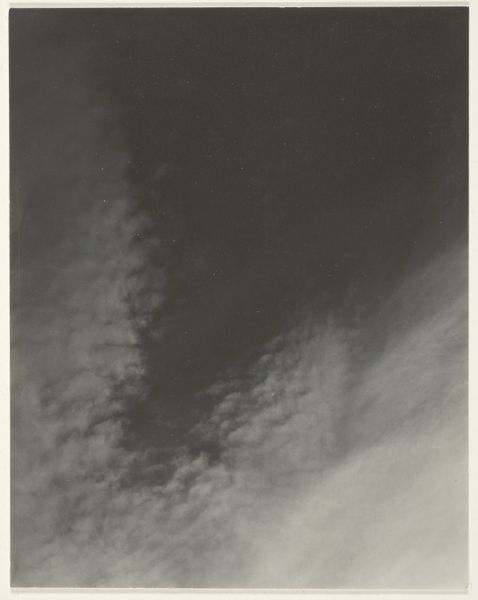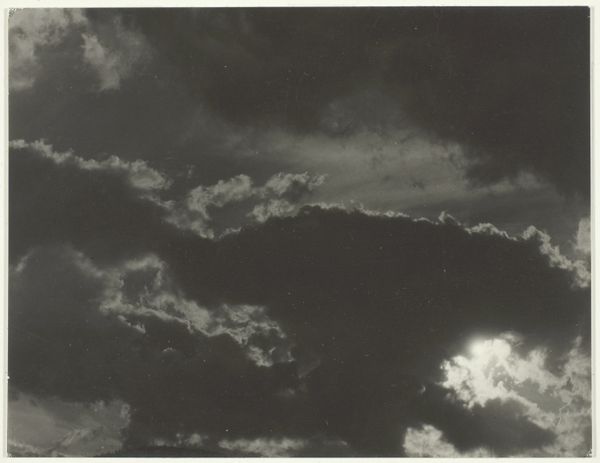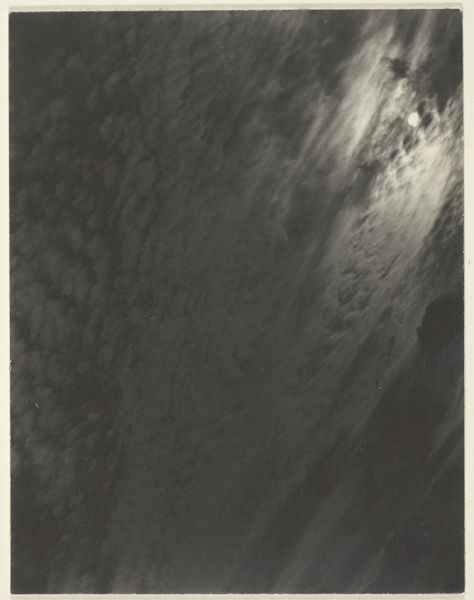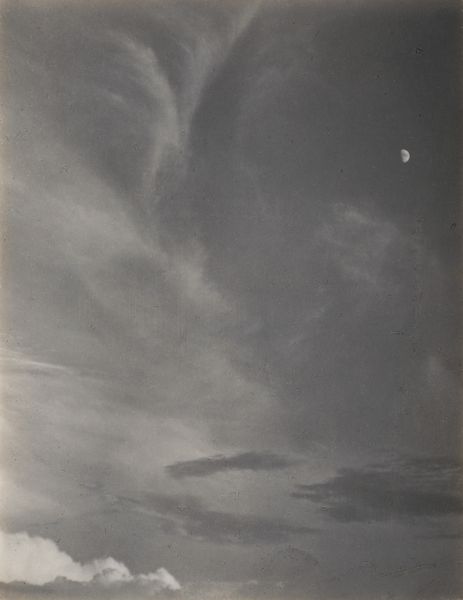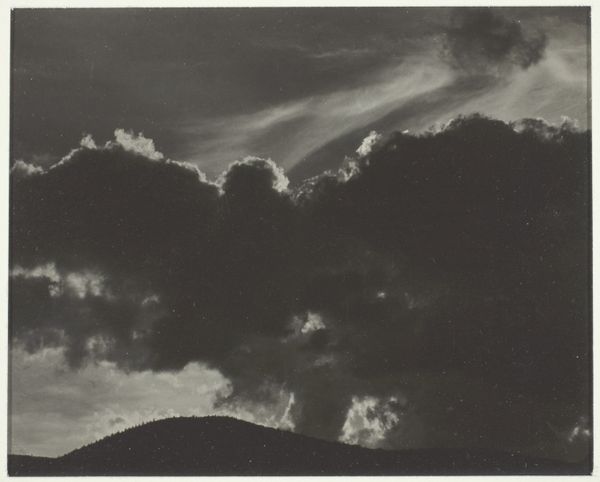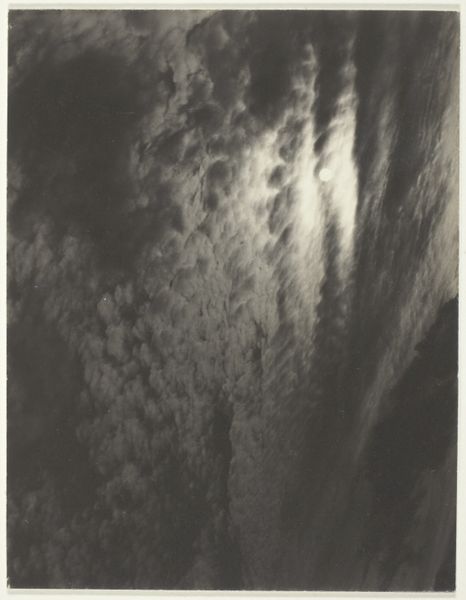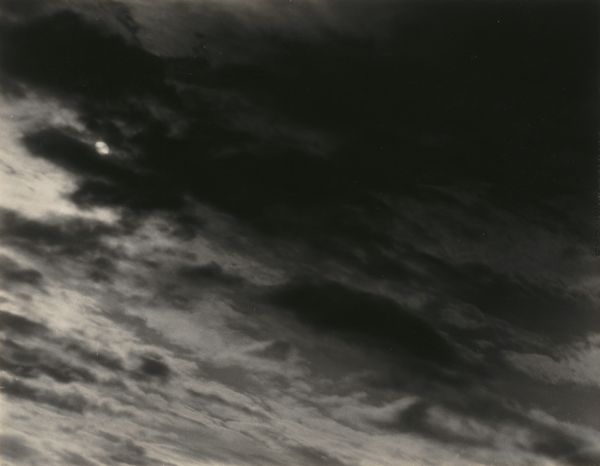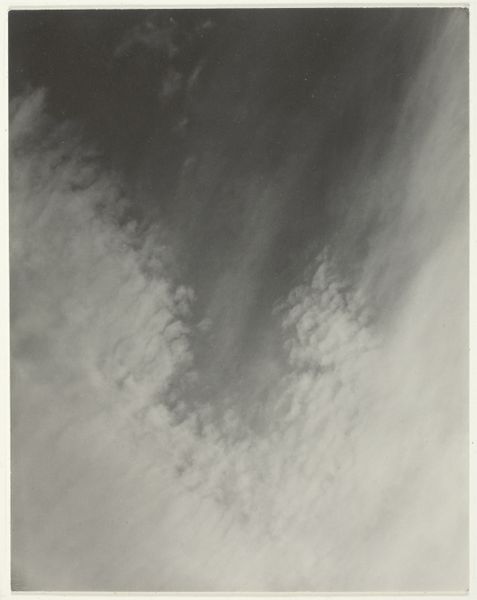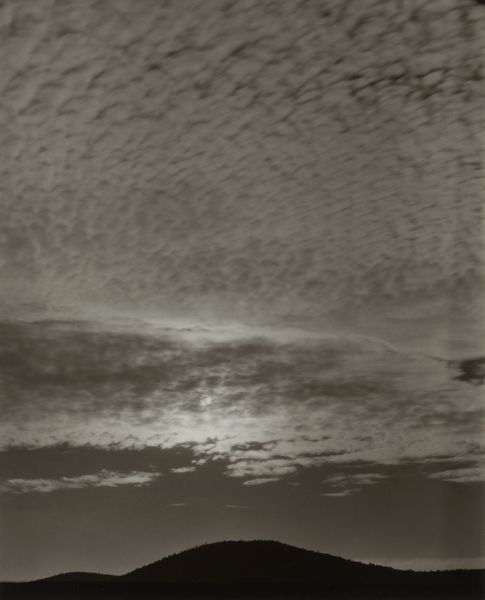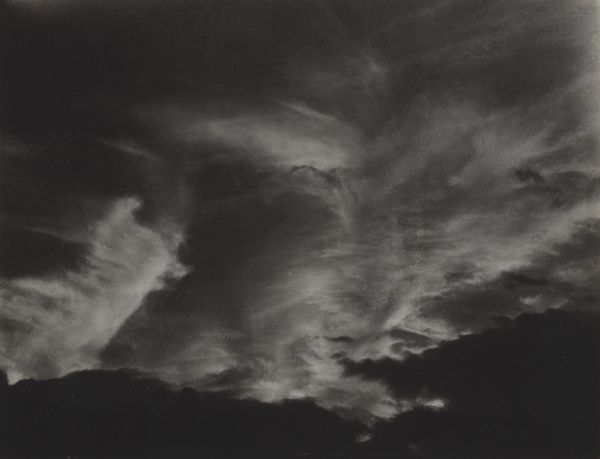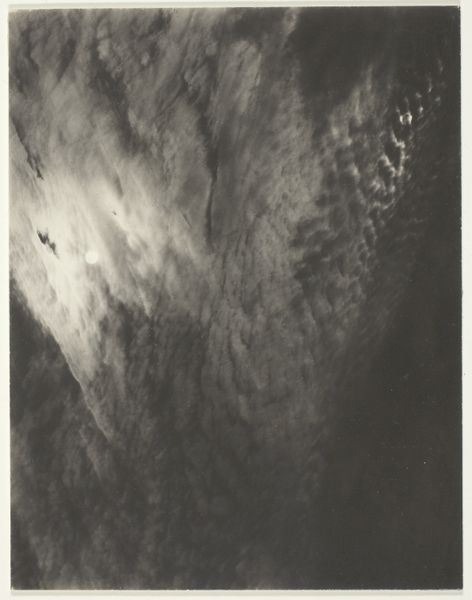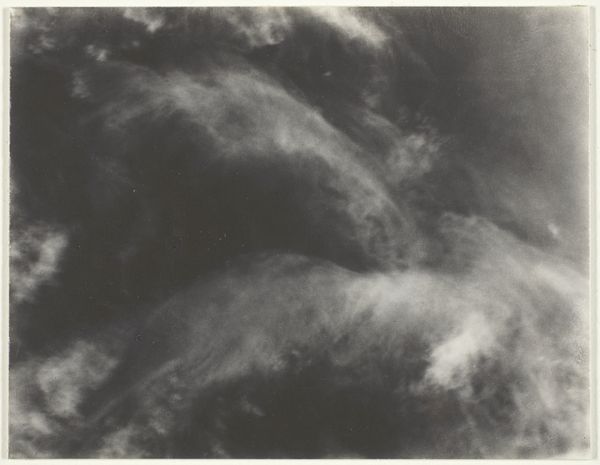
silver, print, paper, photography, gelatin-silver-print
#
silver
# print
#
landscape
#
paper
#
photography
#
gelatin-silver-print
#
abstraction
#
united-states
#
modernism
Dimensions: 11.8 × 9.3 cm (image/paper/first mount); 34.8 × 27.6 cm (second mount)
Copyright: Public Domain
Curator: Up next we have a gelatin silver print by Alfred Stieglitz titled "Equivalent, from Set A (Third Set, Print 1)", created in 1929. Editor: Immediately, the textures seize my attention. It feels atmospheric, turbulent, yet balanced. Curator: The "Equivalents" are part of Stieglitz’s broader modernist project, breaking from traditional subject matter. Rather than focusing on external realities, these images sought to capture internal emotional states through abstraction. Editor: Right. The clouds aren’t just clouds; they're signifiers. The swirling patterns, the interplay of light and shadow. Semiotically, it seems designed to evoke something beyond the literal. Do you find the abstraction successful here? Curator: Absolutely. Consider the time: after World War I, artists searched for new forms to express a changed world. Photography, previously seen as merely representational, becomes a vehicle for exploring psychological and emotional landscapes. Stieglitz believed he was photographing his states of mind. Editor: But weren't the "Equivalents" also critiqued? Some saw them as a retreat from social issues, a kind of aesthetic escapism. It’s fascinating to consider how Stieglitz navigated the changing art world and the sociopolitical context. His gallery, "291," promoted avant-garde art but also faced accusations of elitism. Curator: True. Yet, the enduring power of these images lies in their formal construction: the tones, gradients, and composition convey feeling in a way representational photography couldn’t, tapping into universal emotions regardless of the original context. Stieglitz offered them as equivalents of all sorts of things, of music, of states of feeling, of ideas. Editor: I agree. Thinking about its reception, these prints challenge our preconceptions of photography's capabilities and its place within modernism. It prompts one to look at the public role of art itself. Curator: A close look reminds me how a picture, seemingly of a simple sky, contains layers of intent and interpretation. Editor: Indeed. An artwork from a bygone era keeps sparking timely reflections on the very nature of art and representation.
Comments
No comments
Be the first to comment and join the conversation on the ultimate creative platform.
